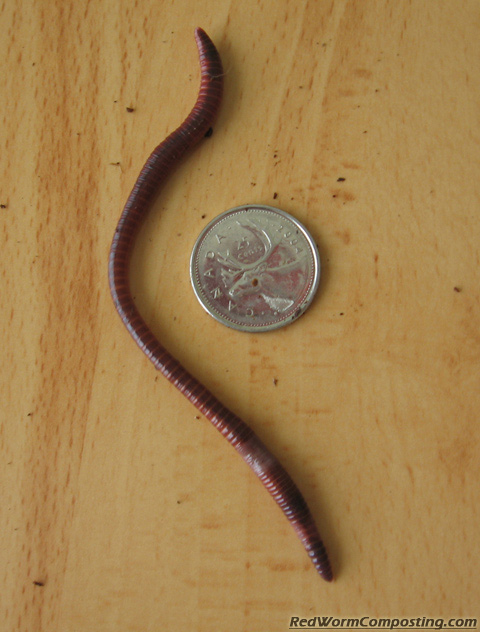How Red Wigglers Can Change Your Composting Experience
The combination of red wigglers into composting techniques uses a transformative method to lose monitoring and dirt enrichment. These microorganisms not only quicken the decomposition procedure however likewise create nutrient-dense vermicompost that enhances dirt wellness and fertility. Their versatility to different environments makes them an ideal choice for both novice and experienced composters alike. Comprehending the specific needs and advantages linked with keeping a thriving worm populace is important for optimizing their possibility. What approaches can one use to make certain an effective vermicomposting experience?
Advantages of Red Wigglers
Red wigglers, clinically called Eisenia fetida, are a cornerstone of effective composting systems due to their remarkable capability to decompose raw material successfully. These worms excel in changing kitchen area scraps, lawn waste, and other natural products into nutrient-rich garden compost, generally referred to as worm spreadings. Lake Hickory Bait. This process not just lowers landfill waste however additionally adds to sustainable gardening practices
One of the primary benefits of red wigglers is their high recreation rate, enabling them to occupy a composting environment rapidly. This quick reproduction enhances decomposition prices, leading to faster garden compost manufacturing. Additionally, red wigglers prosper in a varied range of conditions, making them adaptable to numerous composting arrangements.

Setting Up Your Worm Bin
Ensure that the bin has water drainage holes to avoid water accumulation, which can lead to anaerobic problems destructive to the worms. In addition, including air flow openings will help keep correct humidity degrees and oxygen circulation.
Following, it is vital to supply bed linen for the worms, which can consist of shredded paper, cardboard, or coconut coir. This bedding not only supplies an environment for the worms yet likewise aids in wetness retention.
Placement the worm container in a place that preserves a temperature level range of 55-77 ° F(13-25 ° C) to optimize worm activity. Prevent placing the container in straight sunlight or severe temperatures. By following these standards, you can produce a helpful atmosphere for red wigglers, boosting the performance of your composting process.
What to Feed Your Worms

To maintain optimum conditions, it's advisable to slice larger scraps into smaller pieces, promoting quicker decay. Begin by presenting small amounts of food and keep track of the worms' intake price; adjust as necessary to avoid overfeeding, which can create an undesirable environment. Giving a consistent feeding schedule will certainly help keep your worm populace flourishing while improving the overall effectiveness of your composting efforts. By recognizing what to feed your worms, you lay the foundation for a successful and lasting composting experience.
Maintaining a Healthy Environment
Producing a flourishing composting setting for red wigglers needs focus to their environment, as it straight affects their wellness and productivity. The optimal environment should maintain a well balanced moisture level, commonly in between 60-70%. Excessive dampness can bring about anaerobic problems, while inadequate moisture may dehydrate the worms.

The bed linens material in the compost should be varied and shredded, integrating products like cardboard, newspaper, and coconut coir. This not only gives a comfy environment however also acts as a food resource. Lake Hickory Bait. Consistently looking for smells or indicators of pests can help identify potential concerns prior to they intensify
Lastly, maintaining a well balanced pH degree, ideally between 6 and 7, guarantees a favorable environment for red wigglers, fostering their capability to procedure natural matter effectively. By addressing these elements, you can develop a lasting and effective composting ecosystem.
Harvesting and Using Compost
Harvesting garden compost from a worm container is a satisfying process that transforms natural waste right into nutrient-rich material for gardens and plants. As soon as the composting cycle is total, normally after 8-12 weeks, it's time to collect the vermicompost. The initial step involves separating the red wigglers from the ended up garden compost. This can be done making use of techniques such as the "light" method, where worms are brought in to light and can be scooped far from the top layers, or by relocating the compost away of the bin and including fresh bedding to the other side, urging the worms to migrate.
Once the worms are gotten rid of, the remaining compost can be filtered to this page get rid of any type of bigger particles or undecomposed material. The end product needs to have a dark, brittle texture and a positive natural odor, suggesting that it is ready for usage. This rich compost can be applied directly to garden beds, combined right into potting soil, or used as a top dressing for potted plants. By integrating vermicompost right into your gardening practices, you not only improve soil fertility yet likewise advertise healthy and balanced plant development and lasting gardening techniques.
Conclusion
Incorporating red wigglers right into composting practices considerably boosts the disintegration process and contributes to the manufacturing of nutrient-rich vermicompost. Their versatility to numerous atmospheres and high recreation rates guarantee a sustainable populace, which successfully breaks down natural issue. The resulting worm spreadings improve dirt structure, fertility, and microbial task, inevitably advertising much healthier plant development. For that reason, the integration of red wigglers into composting not only maximizes waste administration but likewise improves yard environments.
Comments on “Lake Hickory Bait: Your Resource for Successful Fishing on the Lake”